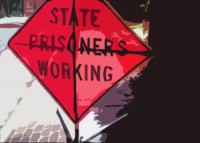
Lisle v. State (Nev. Supreme Ct. – June 25, 2015)
The issue is whether a claim of actual innocence of the death penalty offered as a gateway to reach a procedurally defaulted post conviction relief claim can be based on a showing of new evidence of mitigating circumstances.
On the evening of October 22, 1994, Melcher was driving on a Las Vegas freeway and pulled his van alongside a Mustang driven by Logan. Lisle, the front passenger in Melcher’s van, shot and killed Logan. Evans was in the van’s back seat, and he and Melcher testified against Lisle at trial. The jury found Lisle guilty of first-degree murder with the use of a deadly weapon, found a single aggravating circumstance (the murder was committed by a person who knowingly created a great risk of death to more than one person), found other mitigating circumstances, and concluded that the mitigating circumstances did not outweigh the aggravating circumstance. The jury sentenced Lisle to death. The Nevada Supreme Court affirmed the judgment and sentence.
Lisle then filed a timely post-conviction petition for a writ of habeas corpus, and the district court appointed counsel to supplement and litigate the petition. The district court denied the petition, and the Nevada Supreme Court affirmed the district court’s order. Lisle filed his second post-conviction habeas petition, claiming that he received ineffective assistance of trial, appellate, and post-conviction counsel. The district court dismissed the petition as procedurally barred. Lisle appealed.
Lisle argued, among other issues, that he was actually innocent of the death penalty on two grounds. First, he argued that there was insufficient evidence of the single aggravating circumstance found by the jury. Second, he argued that had the jury been presented with the new evidence of mitigating circumstances that he provided to the post-conviction court, no rational juror would have found him eligible for the death penalty.
The Nevada Supreme Court found that the first ground underlying Lisle’s actual-innocence claim, based on a challenge to the aggravating circumstance, lacked merit. Lisle pointed to no new evidence supporting his claim of actual innocence with respect to the aggravating circumstance. Nor did his arguments present any issue of first impression as to the legal validity of the aggravating circumstance. Accordingly, Lisle had not demonstrated actual innocence based on his challenge to the aggravating circumstance, and the Court concluded that the district court did not err in declining on this basis to reach Lisle’s procedurally barred claims.
The second ground underlying Lisle’s actual-innocence claim presented an issue of first impression for the Court: can a claim of actual innocence of the death penalty offered as a gateway to reach a procedurally defaulted claim be based on a showing of new evidence of mitigating circumstances? Although the Court had not answered that question, the United States Supreme Court addressed it in Sawyer v. Whitley, 505 U.S. 333 (1992), in the context of a successive federal habeas petition challenging a Louisiana death sentence.
The Sawyer court rejected the idea that the actual-innocence exception to procedural default should extend to the existence of new mitigating evidence. The court’s conclusion was based primarily on two observations. First, extending actual innocence to include new mitigating evidence would reduce the exception to little more than what is already required to show ‘prejudice,’ a necessary showing for habeas relief for many constitutional errors, such as ineffective assistance of counsel. The court reasoned that a petitioner should have to show something more than he would have had to show to obtain relief on his first habeas petition to get a court to reach the merits of his claims on a successive habeas petition. Second, the subjective nature and breadth of mitigating circumstances would so broaden the actual innocence inquiry as to make it anything but a narrow exception to the principle of finality. The Court agreed that these observations counsel against opening the actual-innocence gateway to include new mitigating evidence, for otherwise the exception would swallow the procedural defaults adopted by the Legislature.



